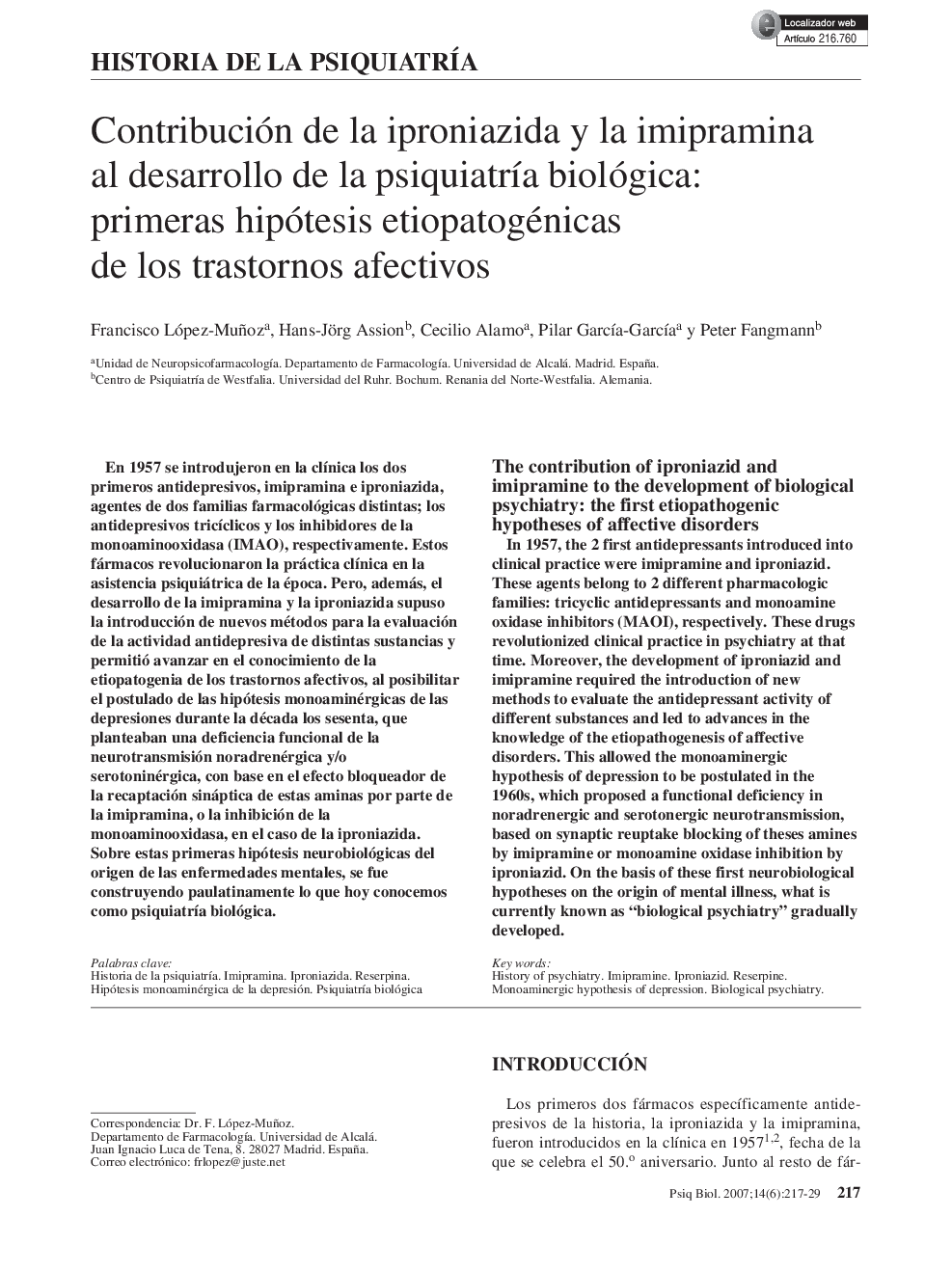| Article ID | Journal | Published Year | Pages | File Type |
|---|---|---|---|---|
| 4188841 | Psiquiatría Biológica | 2007 | 13 Pages |
Abstract
In 1957, the 2 first antidepressants introduced into clinical practice were imipramine and iproniazid. These agents belong to 2 different pharmacologic families: tricyclic antidepressants and monoamine oxidase inhibitors (MAOI), respectively. These drugs revolutionized clinical practice in psychiatry at that time. Moreover, the development of iproniazid and imipramine required the introduction of new methods to evaluate the antidepressant activity of different substances and led to advances in the knowledge of the etiopathogenesis of affective disorders. This allowed the monoaminergic hypothesis of depression to be postulated in the 1960s, which proposed a functional deficiency in noradrenergic and serotonergic neurotransmission, based on synaptic reuptake blocking of theses amines by imipramine or monoamine oxidase inhibition by iproniazid. On the basis of these first neurobiological hypotheses on the origin of mental illness, what is currently known as “biological psychiatry” gradually developed.
Related Topics
Health Sciences
Medicine and Dentistry
Psychiatry and Mental Health
Authors
Francisco López-Muñoz, Hans-Jörg Assion, Cecilio Alamo, Pilar GarcÃa-GarcÃa, Peter Fangmann,
